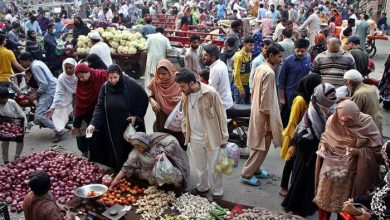Raast payments hit Rs1tr in 16 days

Pakistanis recently made financial transactions totalling Rs1 trillion via Raast, an instant payment system, in just 16 days, compared to the first Rs1 trillion transacted over 336 days two years ago, marking a significant shift towards the adoption of digital payment solutions.
The State Bank of Pakistan (SBP) reported that Raast has processed 892 million transactions amounting to Rs20 trillion, with the latest trillion achieved in just 16 days. “This reflects SBP’s commitment to making digital payments easier and accessible for all,” the bank stated. The data suggests that the average payment size through the online system stood at Rs22,421.52.
According to the SBP’s Governor’s Annual Report 2023-24, the major driver of this volumetric growth in Raast transactions was the Person-to-Person (P2P) module, which was launched in February 2022.
Pakistan’s digital payments and financial markets are experiencing continuous improvements, including the SBP’s introduction of the Person-to-Merchant (P2M) module in Raast. This module allows businesses to accept payments via QR codes, Raast IDs, bank account numbers, and request-to-pay options, thereby expanding payment choices for customers and further boosting digital payments. This initiative is expected to enhance convenience for businesses in carrying out their transactions.
Meanwhile, the expansion in the total number of accounts maintained a double-digit growth, up 18% to reach 215 million accounts by the end of FY24. “This fast growth is conducive to raising financial inclusion in the country,” the report highlighted.
The significant increase in accounts was supported by the expansion of SBP-regulated entities, including banks, microfinance banks (MFBs), and development financial institutions (DFIs), whose branch networks grew to 18,355 in FY24, up from 17,751 in FY23. These branches, along with increasing alternate delivery channels (ADCs), facilitated financial intermediation and served a large number of customers during FY24.
Despite high inflation and a challenging operating environment, the banking sector’s expanding branch network is encouraging and expected to further enhance outreach and financial inclusion in the economy.
Total deposits mobilised by banks, DFIs, and MFBs rose by 21.6% in FY24 to Rs33,236 billion, with the banking sector driving this effort by increasing deposits to Rs32,538 billion, up 21.5% from the previous year. The rise in deposits was most notable in the savings and fixed categories, spurred by an elevated interest rate environment.
“This rising trend in savings accounts bodes well for reducing cash preference and improving the saving rate in the economy, which remains low compared to regional peers,” the report noted. Reflecting this growth, the banking sector’s higher mark-up/interest expenses on deposits rose to Rs3,236 billion in FY24 from Rs2,011 billion in FY23, reads the governor’s report.
The growth in overall advances (credit to the private sector) of SBP-regulated institutions remained subdued at 0.3% in FY24, with outstanding loans totalling Rs12,650 billion by the end of FY24. However, investments, particularly in government securities, increased by 35.2% to Rs33,271 billion. “This marked the second consecutive year of significant growth in investments after FY22.”
The financial sector exhibited steady performance, continuing to provide credit and financial services amid a moderate economic recovery in an environment of declining yet elevated inflation. The financial sector’s asset base grew by 21.6% to Rs65.2 trillion by the end of FY24. However, the financial depth – the ratio of financial sector assets to GDP – fell to 61.5% from 64% in FY23. This marked the second consecutive year of declining financial depth, as elevated inflation typically hampers financial intermediation.
The after-tax profit (net earnings) of the banking sector rose by 30.4% in FY24 to Rs645.2 billion. However, rising taxation charges, particularly in the case of banks, have become a concern, with tax charges accounting for about 52% of pre-tax profits in FY24.
“From a financial stability perspective, rising taxation has implications for the banking sector’s ability to build buffers necessary to withstand unforeseen macro-financial shocks, take risks, and continue lending during low economic growth periods,” the SBP report stated.
In contrast to the banking sector, the asset base of Development Finance Institutions (DFIs) contracted by 23.7% to Rs2,460 billion by the end of FY24, driven by a reduction in the portfolio of government securities, which had substantially increased during FY23. Consequently, after-tax profits for DFIs fell by 37% to Rs13.2 billion, down from Rs21 billion in FY23.
In the case of Microfinance Banks (MFBs), the pace of asset base growth decelerated to 8.6% in FY24, compared to 19.3% in FY23. Both advances and investments grew at a slower pace, reflecting a relatively difficult operating environment for MFBs compared to banks and DFIs.




